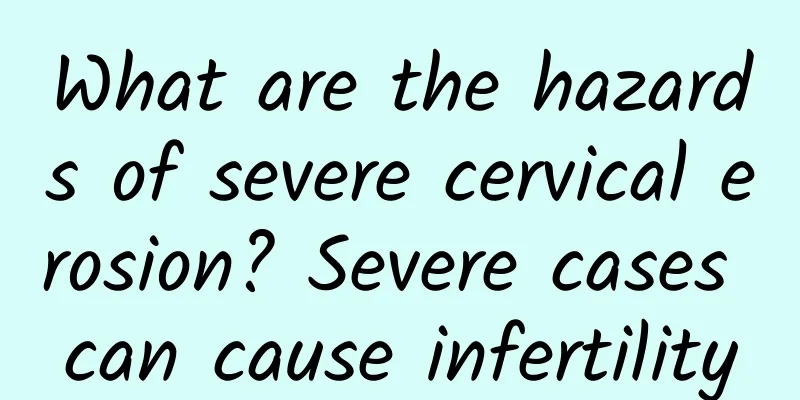Is pelvic peritonitis difficult to cure?

|
When it comes to pelvic peritonitis, I believe many women are very afraid, because in recent years, women's gynecological diseases have increased day by day, and the medical community has also paid great attention to women's gynecological diseases. However, there are still many cases that cannot be treated. It is also for this reason that many patients are very distressed after the disease, which seriously affects the patients' lives and studies. Even so, there are still many patients who do not know much about pelvic peritonitis. Now let's introduce pelvic peritonitis and some tips on how to treat pelvic peritonitis. In fact, pelvic peritonitis is an inflammatory disease of the female pelvic reproductive organs. Many people are very familiar with this disease, and there are often different types of pelvic peritonitis. Many patients will suffer from inflammation of the entire pelvic cavity after the disease. The congestion of the entire pelvic peritoneum also causes a lot of purulent fluid to seep out, which basically contains fibrin. After the inflammation occurs, it connects with the uterus or the intestinal tract to form a mass. In fact, this mass has the ability to protect, and it limits the inflammation to the vicinity of the pelvic cavity, which can prevent it from spreading to other parts of the abdomen. However, there will still be a gap in the middle, and a lot of inflammatory fluid will seep out through the gap and connect to other organs. Slowly, an inflammatory mass is formed. Pelvic inflammatory disease can be cured. Now let’s introduce the treatment methods one by one. 1) Tissue therapy: including placental globulin and placental tissue fluid. This method can be injected intramuscularly, and the specific dosage needs to be consulted by the doctor. 2) Antibiotic treatment: If the patient's symptoms are more obvious, antibiotics should be used for treatment at the beginning. Antibiotics can completely kill some residual substances that cause the disease and prevent other complications. The basic drugs are: gentamicin, metronidazole, penicillin, etc. 3) Physical therapy: If warm and benign stimulation is used, it can also promote the circulation of pelvic blood. It can also effectively improve the local tissue nutrition status. It can also help absorb and reduce inflammation. Many people use shortwave, infrared, or ion penetration indoor methods. 4) Surgical cure: If the inflammation is severe, surgery can be used. However, the specific surgical plan requires specific arrangements by the doctor. After introducing so much, I believe that many patients have a preliminary understanding of pelvic peritonitis. If a patient becomes ill, he or she should go to a regular hospital for treatment in time, so that the disease can be effectively controlled. The patient should also listen to the doctor's advice and take medication on time, so that early treatment and early recovery can be achieved. |
<<: Can pelvic peritonitis heal on its own?
>>: Imaging analysis of congenital absence of vagina syndrome
Recommend
Endometrial thickness affects amenorrhea
Excessive endometrial thickness may lead to ameno...
Which hospital is good for treating irregular menstruation?
Which hospital is good for treating irregular men...
Introduction to two common symptoms of pelvic inflammatory disease
There are two main types of pelvic inflammatory d...
6 doses of Jingjie Siwu Decoction cures functional uterine bleeding
After years of being picky, Xiao Hu got married a...
Why does Bartholinitis keep recurring?
The Bartholin's glands are located at the bac...
Why do women have vulvar itching?
Vulvar itching in women may be related to vaginal...
It's been seven days since my period began, but I still feel a little shaky
It's been seven days since my period began, b...
What are the dangers of having pelvic effusion?
The pelvic cavity is the cradle for a woman to nu...
What are the symptoms and signs of blood deficiency and functional blood bleeding?
Xiaoling has been married for more than a year, a...
What medicine is good for endometritis and pelvic inflammatory disease
Endometritis and pelvic inflammatory disease are ...
How long after abortion can I have sex?
How long after an artificial abortion can you hav...
Understand the symptoms of vulvar leukoplakia
Understand the symptoms of vulvar leukoplakia. Lo...
What yoga moves can I do for uterine adenomyosis? What surgery is best for uterine adenomyosis?
Uterine adenomyosis is a common gynecological dis...
Will ectopic pregnancy cause abdominal pain? What are the characteristics of abdominal pain caused by ectopic pregnancy?
Ectopic pregnancy may cause abdominal pain. The i...
The dangers of vaginitis
Vaginitis is a gynecological inflammation that we...









